What factors should you consider when setting your nail service prices?
Setting the right prices for your nail services is crucial for the success of your business. It requires a real balancing act when looking to find your pricing sweet-spot. Do you go high, show yourself as a high-end manicurist but potentially alienate a large swathe of potential clients or do you go low, offer amazing value but sacrifice your bottom line one the bills start rolling in?
There is no golden egg answer that tells all nail techs to 'charge this amount and you'll succeed' - there are far to many variables at play.
Here's a few of those variables and things to consider:
1. Skill and Experience
Your skill level and experience play a significant role in determining your prices. If you have extensive training, certifications, or years of experience, you can justify charging higher prices. Clients are willing to pay more for the expertise and quality you bring to the table. The term 'get what you pay for' speaks volumes here.
However, having the skill & experience to charge more is only half the battle - you then have to make sure you can showcase that skill / experience to prospective customers to get them through the door. We will cover this in a future blog.
To look at the flip side of this factor, if you are a newer nail tech without years of experience & the subsequent education & skillset that can bring with it, then consider this in your pricing.
2. Time and Effort

The amount of time a service takes along with the level of difficulty it carries are very important and valid factors when structuring your pricing. Without making this sound too obvious, the longer a service should take is an important point to consider when deciding on your pricing structure. A simple outlook would be; the longer something should take, it's reasonable to suggest it will cost more than something that takes, say, half the time.
I've highlighted the word "should" twice here, for good reason. Throughout this whole process of working on your pricing, you need to also understand what is taking a certain amount of time because thats the amount of time that service should take, or whether there is a gap in your skillset / education that is leading you to take much longer than other techs.
While we all learn at our own pace, charging more as a result of a gap in skillset will lead to clients looking elsewhere - so bear this in mind and be honest and upfront with yourself about your timings and the reason for them.
3. Cost of Service

Ultimately, the cost of nail supplies, including polishes, gels, tools, and other materials, should be factored into your pricing as somewhat of a priority. For every service you provide, you will be using products, supplies etc - and these things cost money. Expenses will wildly differ from nail tech to nail tech depending on the products you use, whether you're mobile, home based, salon based or anything in between as well as other expenses you and your business have. Keeping an accurate track on your expenses will give you a valuable understanding of some of the basic questions like: what's the least I can charge to be able to make this service profitable.
This is your business, your livelihood.. as an absolute minimum, the price of your service has to exceed the cost of doing it.
4. Overhead Expenses
I touched on on overheads in the point above, when referencing 'other expenses' you have, such as rent, utilities, insurance - think of these expenses as outgoings that are there regardless of whether you have 5 customers a day or 0. Cost of service expenses should be thought of as the costs incurred because you undertook a service: Gel polish, builder gel, dehydrator, wipes, tools, cleaning products for those items... Do you see the distinction?
Having this distinction is important because your pricing should fairly, but not equally consider both. Cost of service gives you an understanding of the minimum amount to charge just in order to be able to afford the supplies needed to undertake that service. Overhead expenses should be considered too - but the costs here are more static and easier to afford & cover as you get busier.
5. Market Demand
Assess the demand for nail services in your area. If you are located in a high-end neighbourhood or cater to a niche market, you can potentially charge higher prices that reflect this. However, if you are in a competitive market with many nail salons, you may need to adjust your prices accordingly to attract clients.
HINT: While some clients do travel good distances in order to find the right nail tech, a large majority of salons are driven by customers within a semi-local radius. Owing to this point, a very good starting point when building up your pricing structure is to research salons in your area to understand the range of prices in your area. This range is usually quite a good yard-stick for understanding your max/min pricing as it's a tell-tale barometer for what locals are willing to pay for these services.
6. Value-added Services
Think about any additional services or perks you offer that set you apart from competitors. These value-added services, such as complimentary hand massages, personalised nail art, free drinks can all justify higher prices.
7. YOUR Value & Protecting Your Investment
A very simple way you could begin to interpret how much to charge is, how much do you feel you should be earning p/hour? Like many other jobs, your value can be chopped up in to hourly segments - The question is, what are those segments worth?
Once you have landed on an acceptable service pricing structure that is representative of you, your skillset, your local competition and your outgoings per set - you need a level protection for your services. The most obvious and common protection is a clear, well worded, visible cancellation policy.
The key with any cancellation policy is to clearly state the time-based cut-off that you will allow cancellations without charge and that anything beyond that point will incur a charge, of which you will also be clear about (EG. A charge of 50%).
This is to fairly inform your clients that you have this policy and these are the terms and by booking with you, they are then agreeing to such an agreement. The wording can be light, open & honest - even to the point where you are clearly stating this is to ensure that you are still able to meet the ever growing expenses of a nail tech, even if the clients are to cancel. But be fair, life does happen and cancellations are at times avoidable. After all, a happy customer is a returning customer.
To Conclude...
Setting the right prices for your nail services requires a thoughtful analysis of various factors. Consider your skill level, time and effort, supply costs, overhead expenses, market demand, value-added services, and competition. By carefully evaluating these factors, you can establish fair and profitable pricing that attracts clients and supports your business growth.
Understanding your local market & the range of prices in your area at other salons is as good of a starting place as any, for what can feel like quite a daunting, pressurised decision.
And don't be afraid to tweak if something is slightly off. While we don't recommend wholesale changes to your prices too regularly, there is no harm in minor tweaks. Customer appointment behaviours can tell you two things: What's 'in' at the moment and potentially what's good value. In these cases, look at the services that are not as popular a second time to understand whether this is perhaps a pricing faux-pas or whether it's simply market demand.







This is amazing, THANK YOU!
Leave a comment